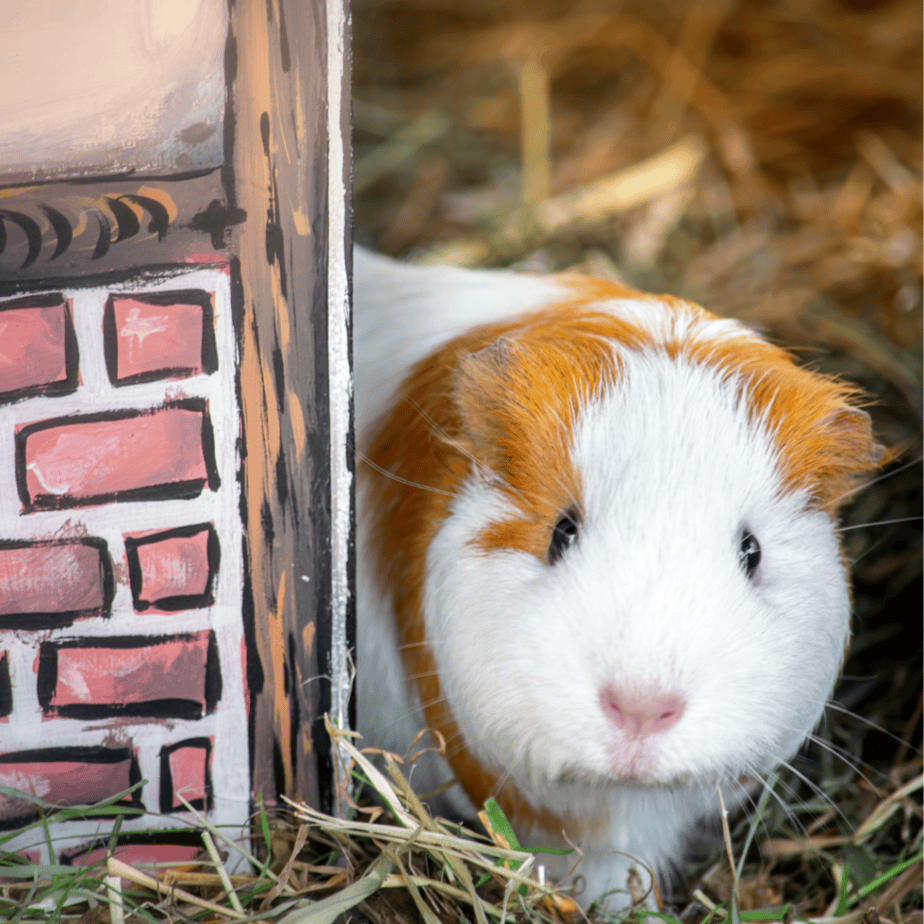Learn about the toxic fabrics that can harm your guinea pig. Discover safe materials to use for your pet’s clothing and bedding to ensure their health and comfort.
Keeping your guinea pig safe and comfortable is a top priority for any pet owner. While dressing up your guinea pig or providing them with cozy bedding can be fun, it’s crucial to know which fabrics are safe and which ones can be harmful. Toxic fabrics can lead to skin irritation, respiratory issues, or even more severe health problems for your furry friend. In this guide, we’ll identify the toxic fabrics you should avoid and suggest safe alternatives, ensuring your guinea pig remains healthy and happy!
Understanding Fabric Toxicity
Choosing the right fabric for your guinea pig’s clothing and bedding is crucial for their health and well-being. Many fabrics contain chemicals and dyes that can be harmful if ingested or absorbed through the skin (Kavee).
Why Fabric Choice is Important:
Guinea pigs have sensitive skin and respiratory systems, making them susceptible to irritants. Certain fabrics can cause allergic reactions, skin irritation, or respiratory problems. It’s essential to be aware of the potential risks to protect your furry friend.
Common Symptoms of Fabric Toxicity:
If your guinea pig is exposed to toxic fabrics, they may exhibit various symptoms. These can include skin irritation, such as rashes or redness. Respiratory issues like sneezing or difficulty breathing might also occur. In severe cases, you may notice changes in behavior, such as lethargy or loss of appetite. If you suspect your guinea pig has been exposed to a toxic fabric, consult your veterinarian immediately. Learn more here.
Toxic Fabrics to Avoid
While many fabrics are safe for guinea pigs, some pose significant health risks. It’s essential to be aware of these to protect your pet.
Synthetic Fabrics:
- Polyester: Commonly found in cheap pet clothing and bedding, polyester can cause skin irritation and overheating due to its lack of breathability.
- Acrylic: Often used in knitwear, acrylic fabrics can contain chemicals that are harmful if ingested.
Treated Fabrics:
- Flame-retardant materials: These fabrics are treated with chemicals to reduce flammability but can be toxic if inhaled or ingested.
- Stain-resistant fabrics: Coated with chemicals to repel stains, these fabrics can cause allergic reactions and respiratory issues in guinea pigs.
Heavily Dyed Fabrics:
- Brightly colored materials: The dyes used to create vibrant colors can sometimes contain harmful chemicals. These chemicals can irritate your guinea pig’s skin or be toxic if chewed.
By avoiding these fabrics, you can significantly reduce the risk of health problems for your guinea pig.
Safe Alternatives for Guinea Pig Clothing and Bedding
While many fabrics are unsuitable for guinea pigs, there are plenty of safe options available. here we are going to explore some alternatives that prioritize your pet’s well-being.
Natural Fabrics:
- Cotton: A classic choice for its softness, breathability, and hypoallergenic properties. Cotton is ideal for both clothing and bedding.
- Fleece: Another excellent option, fleece is soft, cozy, and gentle on your guinea pig’s skin. It’s particularly popular for bedding but can also be used for clothing items.
Untreated Fabrics:
- Organic cotton: Grown without the use of harmful pesticides or chemicals, organic cotton is a pure and safe choice for your guinea pig.
- Hemp: Known for its durability and hypoallergenic properties, hemp is a sustainable and eco-friendly option for bedding and clothing.
By choosing natural, untreated fabrics, you can minimize the risk of exposure to harmful chemicals and create a safe environment for your guinea pig.

How to Identify Safe Fabrics
Choosing the right fabric for your guinea pig’s clothing and bedding is crucial for their health and well-being. Let’s explore how to identify safe materials.
Read Labels Carefully:
The fabric label provides valuable information about the material composition. Look for 100% natural fibers like cotton, wool, or hemp. Avoid fabrics with chemical treatments, such as flame retardants or stain repellents. Synthetic fibers like polyester and acrylic are often treated with chemicals and should be avoided.
Consider Reputable Brands:
Many pet supply companies prioritize animal welfare and use safe materials in their products. Research different brands and read customer reviews to find reputable options. Look for companies that emphasize natural fibers and avoid harmful chemicals.
DIY Testing:
Before introducing a new fabric to your guinea pig’s environment, conduct a small test. Wash the fabric thoroughly to remove any potential irritants. Observe your guinea pig for any signs of discomfort, such as itching, sneezing, or lethargy. If you notice any adverse reactions, discontinue use of the fabric.
Tips for Keeping Your Guinea Pig Safe and Comfortable
Dressing up your guinea pig can be a fun activity, but it’s essential to prioritize their safety and comfort. Here are some tips to ensure a positive experience for both of you:
- Choose the right fabrics: Opt for soft, breathable materials like cotton or fleece. Avoid synthetic fabrics and those with harsh chemicals.
- Prioritize fit: The outfit should fit snugly but not restrict movement. A well-fitting garment will prevent discomfort and accidents.
- Regularly inspect clothing: Check for loose threads, buttons, or decorations that could pose a choking hazard. Remove any damaged items.
- Monitor your guinea pig: Observe your pet’s behavior while wearing the outfit. If they show signs of discomfort, such as excessive scratching or trying to remove the clothes, take them off immediately.
- Limit wear time: Initially, dress your guinea pig for short periods to allow them to adjust. Gradually increase the wear time as they become accustomed to the clothing.
- Offer alternatives: Not all guinea pigs enjoy wearing clothes. Provide plenty of toys and hideaways to keep them entertained without relying on outfits.
Conclusion
Choosing the right fabrics for your guinea pig’s clothing and bedding is essential to their health and well-being. By avoiding toxic materials and opting for safe, natural alternatives, you can ensure your guinea pig stays comfortable and safe. Always monitor your pet for any signs of discomfort and be proactive in making adjustments to their environment. Ready to keep your guinea pig cozy and secure? Start by selecting the safest fabrics today!
Content Disclaimer
The information contained above is provided for information purposes only. The contents of this Blog article are not intended to amount to advice, and you should not rely on any of the contents of this Blog article. Professional advice should be obtained before taking or refraining from taking any action as a result of the contents of this Blog article. VesteForPets.com disclaims all liability and responsibility arising from any reliance placed on any of the contents of this Blog article.
Copyright Notice
These works are protected by copyright laws and treaties around the world. We grant to you a worldwide, non-exclusive, royalty-free, revocable licence to view these works, to copy and store these works and to print pages of these works for your own personal and non-commercial use. You may not reproduce in any format any part of the works without our prior written consent.
Copyright © 2022 – 2024 Veste For Pets







